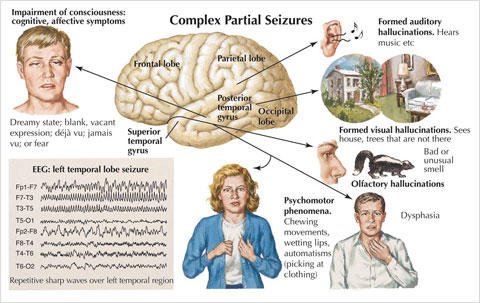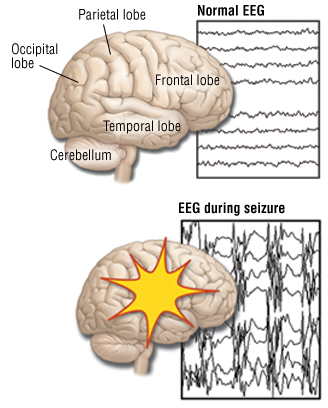There are many types. Flutter eyelids or roll the eyes.
 Febrile Seizures What Parents Need To Know Children S Health Orange County
Febrile Seizures What Parents Need To Know Children S Health Orange County
Febrile seizures are considered complex or complicated if any of the following features are present.

Febrile seizure symptoms. After the seizure your child may be sleepy for up to an hour. Possible symptoms of a febrile seizure can include. A simple febrile seizure stops by itself within a few seconds to 10 minutes.
For example scientists conducting studies in animals are assessing the effects of seizures and anticonvulsant drugs on. The symptoms of febrile seizures vary based on the two types. Signs of a Febrile Seizure.
Lose bladder or bowel control. Gently place your child on the floor or the ground. In most cases febrile seizures are associated with an illness such as an upper respiratory infection eg.
Increased risk of developing epilepsy is low except in a small number of cases. Lose consciousness and may wet or soil themselves. Most febrile seizures will occur during the first 24 hours of developing a fever.
Last less than 15 minutes. During this type of seizure a child may. No more than one in a 24-hour period.
Common cold ear infection roseola. The vast majority of febrile seizures are convulsions. Convulse shake and twitch all over.
Stiffen jerk or twitch the muscles of the arms and legs. Most often during a febrile seizure a child will lose consciousness and both arms and legs will shake uncontrollably. It is often followed by a brief period of drowsiness or confusion.
Investigators continue to monitor the long-term impact that febrile seizures might have on intelligence behavior school achievement and the development of epilepsy. Remove any nearby objects. Less common symptoms include eye rolling rigid stiff limbs or twitching on only one side or a portion of the body such as an arm or a leg.
Simple febrile seizures are most common. General muscle contraction and rigidity that usually lasts 15 to 20 seconds. A febrile seizure may be as mild as the childs eyes rolling or limbs stiffening.
Febrile seizures febrile convulsions are the most common convulsive events in human experience. Clench the teeth or jaw. What You Can Do.
What Are the Signs Symptoms of Febrile Seizures. Convulse shake or twitch. They were recognized as distinct from other seizures in the mid-19th century and at that time treatment was redirected to the underlying causes of fever rather than the symptom of a seizure.
There is nothing you can do to make the seizure stop. Loss of consciousness or fainting like episode that lasts 30 seconds to five minutes. If you think your child is having a seizure due to fever try to stay calm and.
During a febrile seizure your child may. Generalized full body convulsions. Theyre usually over in a few minutes but in rare cases can last up to 15 minutes.
During a febrile seizure a child may. A straightforward febrile seizure like this will only happen once during your childs illness. A fever thats high or a rapid rise in body temperature.
Febrile seizures occur in young children at a time in their development when the seizure threshold is low. Most febrile seizures resolve spontaneously and quickly and do not require acute or long-term anticonvulsant treatment. Become unconscious pass out What to Do.
Febrile seizures are considered simple if they meet all of the following criteria. They often occur during the first day of the fever or illness. Signs of typical seizure activity include loss of consciousness opened eyes which may be deviated or appear to be looking towards one direction irregular breathing increased secretions or foaming at the mouth and the child may look pale or blue cyanotic.
A seizure is a condition that occurs when the body twitches or shakes uncontrollably. They may also be sick and foam at the mouth and their eyes may roll back. Complex febrile seizures are longer lasting have focal symptoms at onset or during the seizure and can recur within 24 hours or within the same febrile illness.
Febrile seizures are usually self-limiting. Symptoms of simple febrile seizure are. Start focally with one body part moving independently of others.
This is a time when young children are susceptible to frequent childhood infections such as upper respiratory infection otitis media viral syndrome and they respond with comparably higher temperaturesAnimal studies suggest a possible role of endogenous pyrogens such as interleukin. This review only deals with simple febrile seizures. A febrile seizure is a type of seizure that children can develop when they have a fever.
Twitching limbs or convulsions usually in a rhythmic pattern.
:max_bytes(150000):strip_icc()/first-aid-for-epilepsy-and-seizures-1204473-01-2b167a5e3e89421cbbf99886a807b0fd.png)






